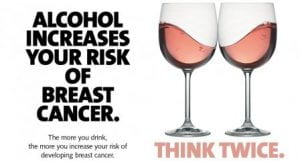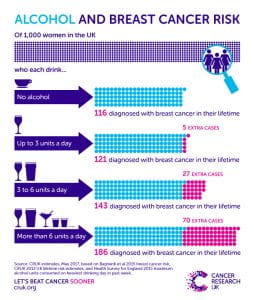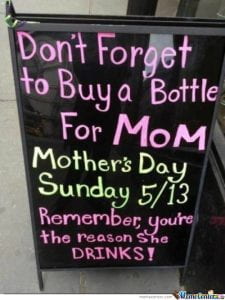Before attending our class on Women and Alcohol, I was unfamiliar with the relationship between alcohol and breast cancer. I had some awareness that alcohol was harmful, but did not know about its direct links to cancers. It is interesting to me that I, along with my peers, can recall learning that one glass of red wine may be beneficial to one’s health, but very few women I have asked remember learning about alcohol and its link to cancer.
As it turns out, this factsheet says that researchers have found no association between a small consumption of red wine, but all the research says that there is no doubt that alcohol is significantly associated with certain cancers. Since many of us enjoy drinking some red wine, this may be the reason why we have “tunnel vision” and are only remembering hearing about a positive effect for our behaviors and not the negative effects. I feel like a lot of the time individuals tune out information that they do not like or information that goes against what they regularly do and like to do because it is not something that they want to hear. Most people do not like to hear that something they are doing is not positive and healthy behavior. It is also really hard to make behavior changes so most people do not want to learn that they have to change their behavior.
I think we need to work harder to create prevention programs that better disseminate these messages. One idea would be to find a way to target the vulnerable population, women. This could be done by creating more ads/commercials on television channels that women frequently watch such as ABC, E and Bravo. Another way to target women would be by requiring alcohol companies to put a warning label on their alcohols about links to breast cancer. Specifically, it would be important to put these warning labels on “women targeted alcohol” such as the low calorie drinks like Truly or Wines. These drinks are commonly drunk by women. Another prevention program idea is to put up factsheets and advertisements in some locations that are commonly frequented by women such as grocery stores or shopping malls. I think that it is important to create advertisements that would attract women and catch their attention. This can be done using bright colors. This is also something that doctors should talk about during primary care and gynecological visits. During my doctor visits, I am asked about my alcohol use, but I have never had a doctor discuss the links between alcohol use and cancers.



